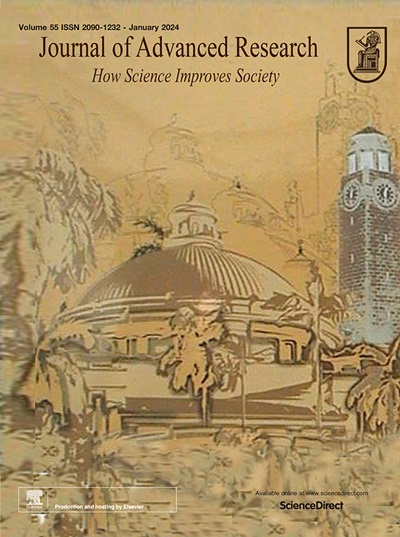靶向 STAT3/IL-36G 信号通路是一种治疗酒渣鼻的有效方法。
IF 11.4
1区 综合性期刊
Q1 MULTIDISCIPLINARY SCIENCES
引用次数: 0
摘要
背景:红斑痤疮是一种炎症性皮肤病,其特征是角质形成细胞释放炎症介质,这被认为在发病机制中起着至关重要的作用。尽管酒糟鼻的发病率约为 5.5%,但它却与生活质量低下有关。然而,由于红斑痤疮的发病机制仍是一个谜,治疗方案也很有限:研究红斑痤疮的发病机制,探索新的治疗策略:方法:利用酒糟鼻患者的转录组数据和免疫组化染色来研究 STAT3 在酒糟鼻中的激活情况。随后,通过在体内和体外抑制 STAT3 的活化,探讨了 STAT3 活化在酒糟鼻中的作用。通过数据分析和实验,确定了 STAT3 激活下游的关键分子。双荧光素酶测定和 ChIP-qPCR 分析被用来验证 STAT3 与 IL-36G 启动子的直接结合。结果发现,STAT3 信号被过度激活:结果:STAT3 信号在酒糟鼻中被过度激活,并成为角质细胞驱动的炎症反应的启动子。从机理上讲,活化的 STAT3 直接与 IL-36G 启动子区域结合,通过促进 IL-36G 的转录来放大下游炎症信号,用中和抗体(α-IL36γ)治疗可减轻酒渣鼻样炎症。值得注意的是,一种天然植物提取物(pogostone)能直接与 STAT3 相互作用,抑制其活化并影响 STAT3/IL36G 信号通路,被筛选为治疗酒糟鼻的一种有前景的外用药物:结论:我们的研究揭示了 STAT3/IL36G 信号在酒糟鼻发病过程中的关键作用,表明针对这一途径的治疗可能是治疗酒糟鼻的一种潜在策略。本文章由计算机程序翻译,如有差异,请以英文原文为准。


Targeting the STAT3/IL-36G signaling pathway can be a promising approach to treat rosacea
Background
Rosacea is an inflammatory skin disorder characterized by the release of inflammatory mediators from keratinocytes, which are thought to play a crucial role in its pathogenesis. Despite an incidence of approximately 5.5%, rosacea is associated with a poor quality of life. However, as the pathogenesis of rosacea remains enigmatic, treatment options are limited.
Objectives
To investigate the pathogenesis of rosacea and explore new therapeutic strategies.
Methods
Transcriptome data from rosacea patients combined with immunohistochemical staining were used to investigate the activation of STAT3 in rosacea. The role of STAT3 activation in rosacea was subsequently explored by inhibiting STAT3 activation both in vivo and in vitro. The key molecules downstream of STAT3 activation were identified through data analysis and experiments. Dual-luciferase assay and ChIP-qPCR analysis were used to validate the direct binding of STAT3 to the IL-36G promoter. DARTS, in combination with experimental screening, was employed to identify effective drugs targeting STAT3 for rosacea treatment.
Results
STAT3 signaling was hyperactivated in rosacea and served as a promoter of the keratinocyte-driven inflammatory response. Mechanistically, activated STAT3 directly bind to the IL-36G promoter region to amplify downstream inflammatory signals by promoting IL-36G transcription, and treatment with a neutralizing antibody (α-IL36γ) could mitigate rosacea-like inflammation. Notably, a natural plant extract (pogostone), which can interact with STAT3 directly to inhibit its activation and affect the STAT3/IL36G signaling pathway, was screened as a promising topical medication for rosacea treatment.
Conclusions
Our study revealed a pivotal role for STAT3/IL36G signaling in the development of rosacea, suggesting that targeting this pathway might be a potential strategy for rosacea treatment.
求助全文
通过发布文献求助,成功后即可免费获取论文全文。
去求助
来源期刊

Journal of Advanced Research
Multidisciplinary-Multidisciplinary
CiteScore
21.60
自引率
0.90%
发文量
280
审稿时长
12 weeks
期刊介绍:
Journal of Advanced Research (J. Adv. Res.) is an applied/natural sciences, peer-reviewed journal that focuses on interdisciplinary research. The journal aims to contribute to applied research and knowledge worldwide through the publication of original and high-quality research articles in the fields of Medicine, Pharmaceutical Sciences, Dentistry, Physical Therapy, Veterinary Medicine, and Basic and Biological Sciences.
The following abstracting and indexing services cover the Journal of Advanced Research: PubMed/Medline, Essential Science Indicators, Web of Science, Scopus, PubMed Central, PubMed, Science Citation Index Expanded, Directory of Open Access Journals (DOAJ), and INSPEC.
 求助内容:
求助内容: 应助结果提醒方式:
应助结果提醒方式:


